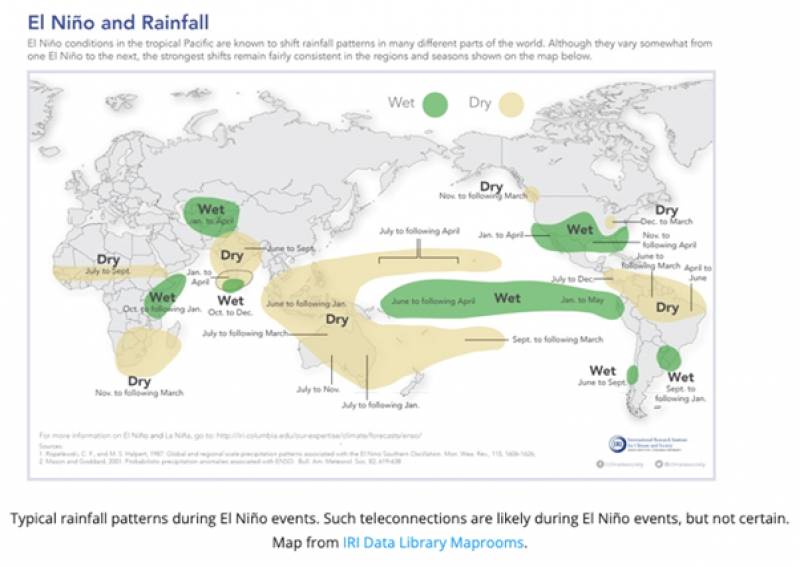Date Published: 04/05/2023
Experts say Spain is in for a blistering hot summer and a very rainy autumn this year
The return of the El Niño weather system in the Pacific Ocean will bring rising temperatures and more rain

According to the current weather forecasts for Spain, it doesn’t look like May will be a month of especially abundant rainfall and this summer is expected to be dry as a bone and extremely hot.
However, meteorologists from Spain’s State Meteorological Agency (Aemet) have predicted that this autumn – which is admittedly still a long way off – will be when the heavy rains finally arrive in full force.
This is according to the long-term, six-month forecast, which predicts a rainy October and a wet meteorological autumn, breaking a prolonged dry spell that has been affecting a large part of mainland Spain for the last two years.
It will be far too late for farmers, whose crops and livestock are suffering from water shortages now, but it may give some hope for the crops at the end of the year.
That said, these models always have to be approached with “prudence” as they are “marked by such long timescales,” according to Aemet spokesperson Ricardo Torrijo.
Still, the World Meteorological Organisation (WMO) warned on Wednesday that the likelihood of an El Niño event, a natural weather phenomenon characterised by rising ocean temperatures associated with changes in the atmosphere, is increasing before the end of this year.
What is the El Niño weather phenomenon and how will it affect Spain?
El Niño and La Niña are climate patterns in the Pacific Ocean that can affect weather worldwide.
After three years, say the experts, the unusually persistent cold phase of La Niña has come to an end, and current conditions in the tropical Pacific are ENSO-neutral, meaning that neither an El Niño nor a La Niña episode is occurring.

From now on, according to the WMO’s Global Long-Range Forecast Production Centres, there is a 60% probability that an El Niño episode will develop during May-July 2023, with that percentage increasing to 70% for the June-August period and to 80% for the July-September period.
WMO Secretary-General, Professor Petteri Taalas, said, “We have just experienced the eight warmest years on record, despite the fact that during the last three years the La Niña episode has had a cooling effect that has temporarily slowed down the increase in global temperatures.
“The most likely scenario is that the onset of an El Niño event will trigger a further rebound in global warming and increase the likelihood of record-breaking temperatures.”
According to WMO reports on the state of the global climate, 2016 was the warmest year on record due to a combination of two factors: a very strong El Niño episode and human-induced warming from greenhouse gases.
The effect on global temperatures usually manifests itself in the year following the onset of this phenomenon, so its consequences are likely to be most noticeable in 2024.
“The world should prepare for the formation of an El Niño event, which is often associated with increased heat, drought or precipitation in different parts of the world. It could alleviate the drought in the Horn of Africa, as well as other effects caused by La Niña, but it could also trigger more extreme weather and climate events,” said the professor.
Images: WMO
Loading
See more environmental news about Spain:
OR
Sign up for the Spanish News Today Editors Roundup Weekly Bulletin to get a comprehensive email with all the week’s news for Spain, Murcia, Alicante and Andalucía.
Get a sneak peek – here are a few of our recent Subscription Bulletins:
Discount Special Offer subscription:
36.95€ for 48 Editor’s Weekly News Roundup bulletins!
Please CLICK THE BUTTON to subscribe.
Contact Spanish News Today: Editorial 966 260 896 /
Office 968 018 268























